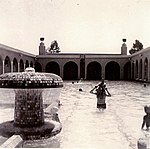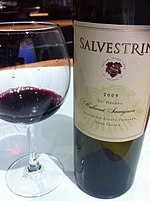Schramsberg Vineyards
1862 establishments in California1965 establishments in CaliforniaAmerican companies established in 1965California Historical LandmarksCompanies based in Napa County, California ... and 3 more
National Register of Historic Places in Napa County, CaliforniaSparkling winesWineries in Napa Valley
Schramsberg Vineyards is a winery located in Calistoga, California in the Napa Valley region. The vineyard, which was founded in 1862 by the German immigrant Jacob Schram, produces a series of sparkling wines using the same method as champagne. Schramsberg is considered one of the premium brands in the production of sparkling wine in California and the first U.S. wine to "match the style and quality of the best French Champagnes".After nearly 50 years of inactivity, Schramsberg was acquired by Jack and Jamie Davies in 1965 who began producing champagne method wine. Today, Schramsberg is managed by Hugh Davies, the youngest son of Jack and Jamie Davies.
Excerpt from the Wikipedia article Schramsberg Vineyards (License: CC BY-SA 3.0, Authors).Schramsberg Vineyards
Schramsberg Road,
Geographical coordinates (GPS) Address Phone number Website Nearby Places Show on map
Geographical coordinates (GPS)
| Latitude | Longitude |
|---|---|
| N 38.550641 ° | E -122.539648 ° |
Address
Schramsberg Vineyards
Schramsberg Road 1400
94515
California, United States
Open on Google Maps







